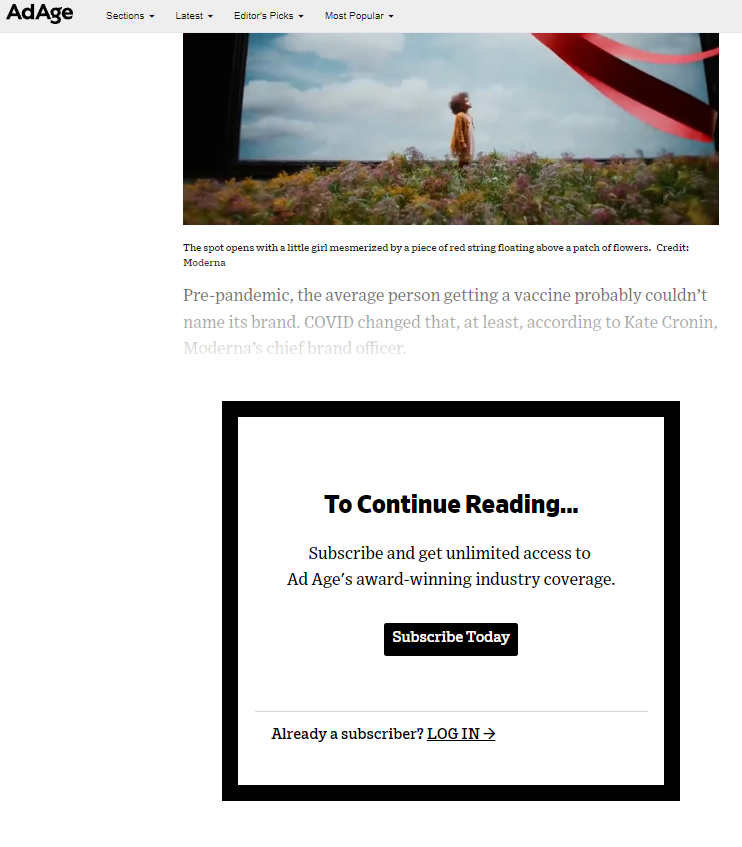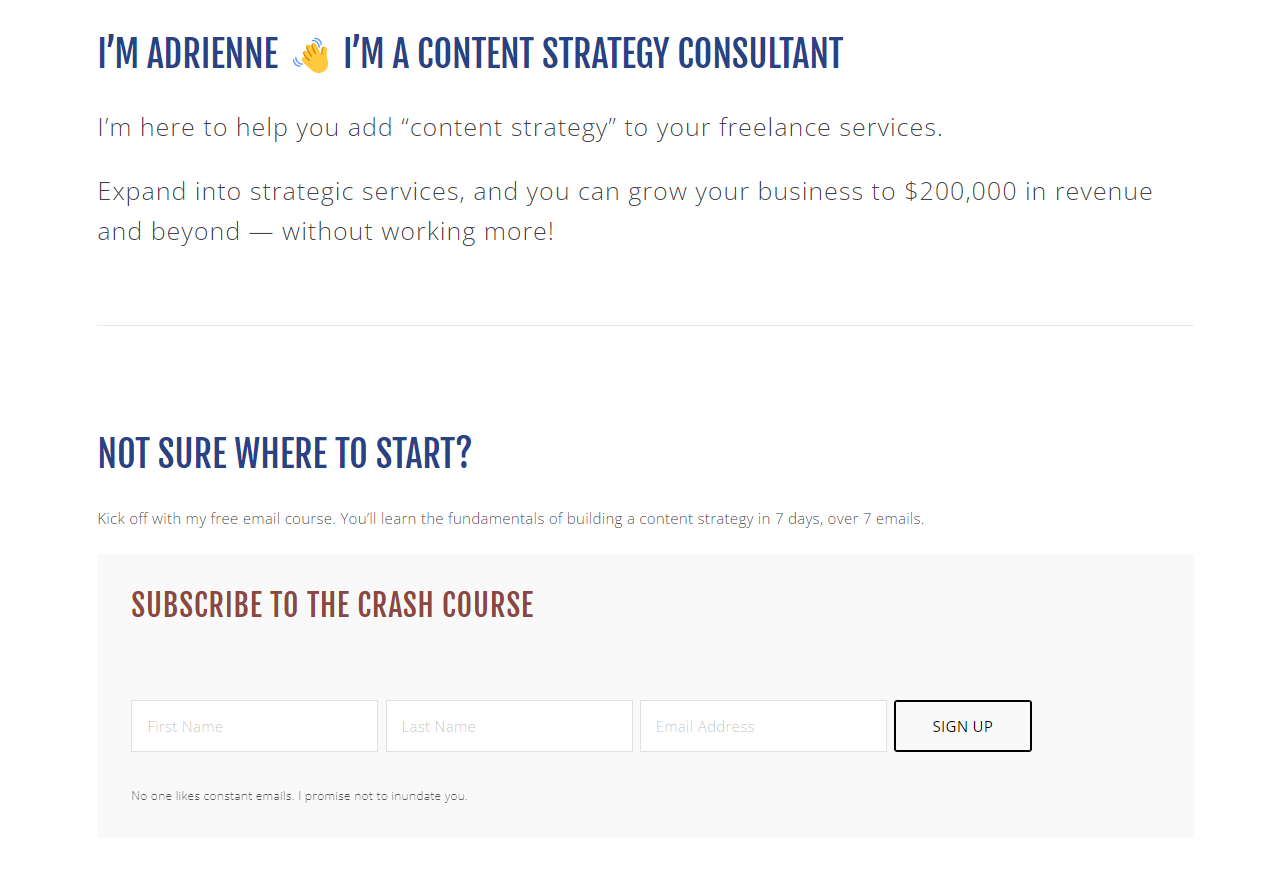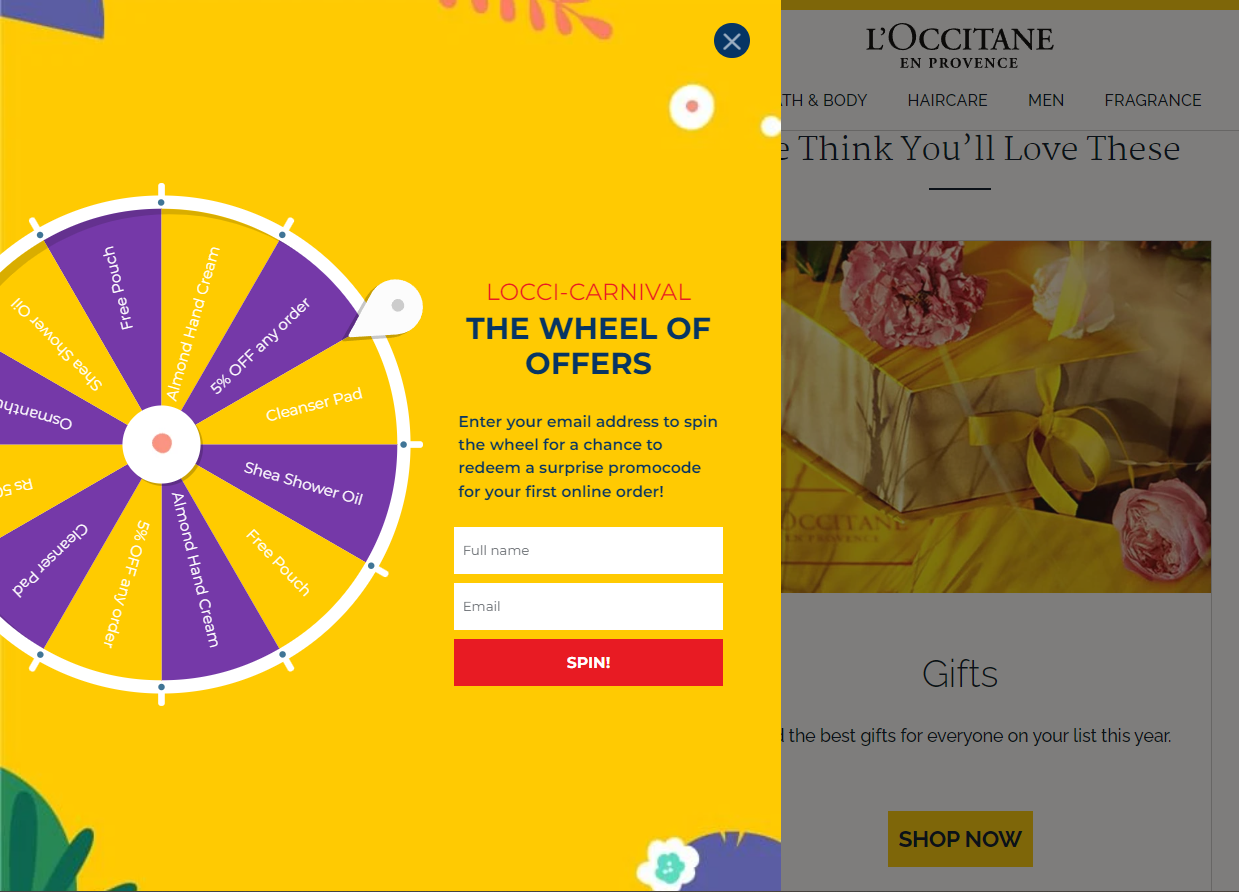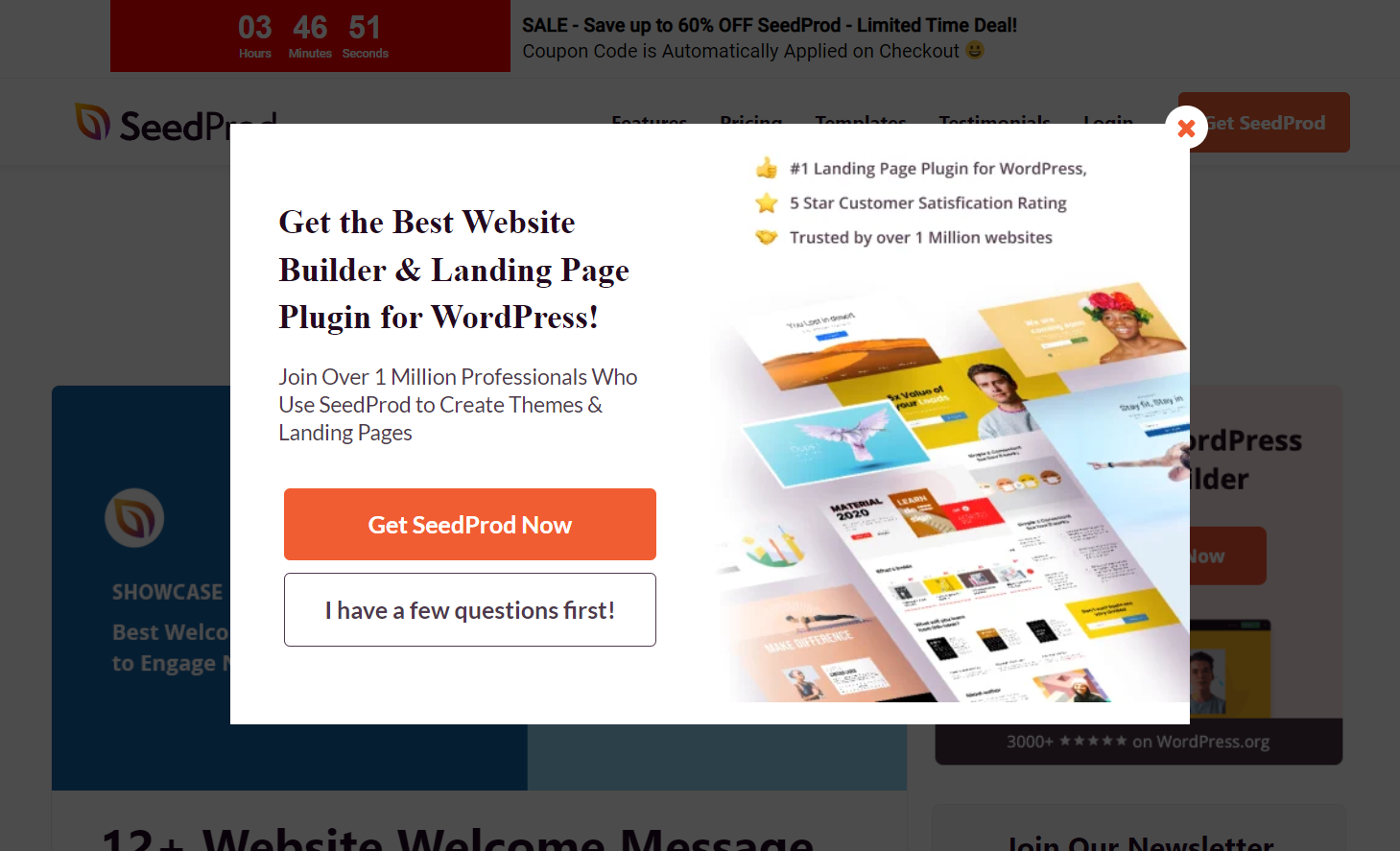
As a small business owner or business leader, you know the importance of generating leads – whether through email marketing, social media, or even events.
By capturing more leads, you can increase interest in your brand and drive sales. And there are many potential strategies to try out.
In this post, I’ll share a commonly used and powerful technique: leveraging gated content.
- What is gated content?
- Should you use gated content?
- 10 Ways to Generate More Leads with Gated Content
- 1. Create a lead magnet
- 2. Create a drip email series for educational content
- 3. Offer a free trial or demo
- 4. Host a webinar or online event
- 5. Create a quiz or assessment
- 6. Create an exclusive membership or community
- 7. Provide access to premium content
- 8. Offer a discount or coupon code
- 9. Host a challenge or contest
- 10. Provide access to a free tool or software
- Over to you
What is gated content?
If content is king, then gated content is comparable to a castle.
Like a castle, a website can prevent people from accessing its valuable assets i.e., content.

In other words, gated content is your blog posts, ebooks, and other formats that aren’t readily available to the public. There’s a content ‘lock’ on these assets.
However, almost anyone can get the key to these hidden-away materials. Your audience just has to enter an email address, make a purchase, or be part of a membership and they’ll be able to read, listen to, or consume your information.
This means of generating leads is extremely popular today. It’s a common tactic that many businesses use, and in all likelihood, you’ve probably interacted with such content numerous times.
We’ll explore specific examples of gated content and how to use them to generate more leads in the sections that follow.
Should you use gated content?
Full disclosure: There are some disadvantages to gating your content.
One is that your content won’t show up in search engines. This means that you’ll miss potential visitors who might turn into leads.
Another is that the experience of having to give contact details to access content can put people off — people who have a legitimate interest in your offerings.
And finally, creating gated content means having to know how to add a content lock to your blog posts, videos, and other material. This could require technical skills or an investment in paid tools to do it for you.
On the other hand, there are clear advantages to creating content locks for your content assets.
The most obvious is that it allows you to capture leads from your content. In addition, gated content increases the value of what you offer — giving people an incentive to become a part of your membership or use your services.
Moreover, gating your content also gives you control over who can access it. This allows you to keep your valuable content safe and only give access to customers who have given you their address or purchased something from you.
And lastly, there are many customers who want a gated experience. Having a membership portal or exclusive content gives people the opportunity to:
- Discuss and share ideas or information they don’t want available to everyone on the internet
- Build niche skills and get ‘hidden gems’ of information that they can use to upskill themselves, make more money, or gain some other advantage.
So, whether you should use gated content depends on your needs and preferences. But if you’re looking for a way to generate more leads, this will be an effective strategy.
In the following sections, we’ll look at specific strategies to generate leads effectively with gated content.
10 Ways to Generate More Leads with Gated Content
Now that we’ve covered the basics of gated content and its pros and cons, let’s dive into specific strategies to generate more leads using this technique.
Here are ten powerful ways to effectively use gated content to boost your leads and drive sales.
1. Create a lead magnet
This is a very common way to get leads with content locks.
When a user lands on your website and spends some time on it or shows signs of leaving, you can set up an opt-in popup form to appear and make a compelling offer.
For example, if you’re a business coach, you might create a lead magnet titled ’10 Free Business Tools to Grow Your Website in 30 Days’ or ‘The Ultimate Business Plan Template.’
An interested audience member will gladly provide their email address to use such assets. And you’ll get a lead.
Use a good opt-in popup form tool to help make this process easy and quick. And you should provide a lead magnet that matters to your audience and is relevant to them. Make sure it’s practical, compelling, and useful.
2. Create a drip email series for educational content
People love to get free educational material that will give them a boost in some area of their life.
And one clever and compelling type of gated content is an online email course built with a drip functionality.
Just as water drips from a faucet, drip email campaigns are designed to send emails over a period of time.
You can use this method to share tips and tricks that your audience can use. Each email can be a chapter or a section of a larger course.
This is a great way to share a chunk of content spread over several days rather than giving everything away in one go.

And you keep your audience engaged for days, if not weeks!
Use this type of content lock if you’re an expert who can provide valuable materials to your audience. Make sure to include a call to action in each email, encouraging readers to take action or learn more.
3. Offer a free trial or demo
Often, people are not ready to pull out their credit cards and buy your product outright.
But they will be happy to give you their name and email address if they can use your product or service for free — even if it’s just a short trial.
This is a great way to lock in leads and get people invested in your product. They will be more likely to purchase if they have already taken the time to learn about it and see how it works.
You also get the chance to nurture your audience over time because you can send an email series to help them make the best use of your product. Make sure to follow up with each trial user to answer any questions they may have and encourage them to purchase.
4. Host a webinar or online event
Gated content doesn’t have to be limited to written content.
You can also host webinars or online events that require registration.
For example, say that you’re a personal stylist. You could promote and host a webinar on ‘How to Dress for a C-Level Job Interview.’
You can host this webinar on a conferencing platform that’s accessible to only those people who paid, signed up for your newsletter, or shared their contact information in some way.
I recommend that you use Constant Contact’s event management tool. With this powerful tool you can:
- Build events with invitations, landing pages, and even offer digital tickets
- Add discounts and promo codes for special offers
- Build special landing pages linked to the event
- Promote to your social media profiles with a click
- Collect payments for event registrations
- Get detailed reports and analytics
- Gather leads
- Build a stronger relationship with your audience and garner trust
Your webinar and other events will help your audience learn something new and even sign up for your premium services. And you’ll build leads that you can nurture over time.
5. Create a quiz or assessment
Quizzes and assessments are interactive, challenging, and fun. And they often tell people something about themselves.
You can create quizzes or assessments like personality tests and set them up so that users will see their final scores in the inbox.
This is a great way to collect leads and create an engaging user experience at the same time.
6. Create an exclusive membership or community
Content isn’t just videos, text, audio, or images.
Content can also be relationships, conversations, and experiences.
You can create an exclusive membership or a private community that requires users to join and participate to access certain content.
Some situations where a gated community is useful are:
- Online courses and training where students or participants benefit from discussing the lesson material with peers
- A mastermind group of professionals in the field who can come together and share best practices, resources, and more.
- Coaching and mentorship sessions, where members can access exclusive content, get feedback from the community
- Customer support and engagement for SaaS businesses or any other kind of business actually
In such cases, gated content and communities are a must-have to help customers.
And if you just want to get leads, you can ask people to submit their emails before they can join the community.
Or, if you want to make money, you can create a membership subscription or a one-time fee.
In this way, gated communities and memberships are meaningful and powerful sources of leads.
Make sure you use a membership plugin, a learning management system, or a free social media group to build such an arena.
7. Provide access to premium content
Many media publications have a model where they offer limited content for free but require a subscription for full access.
You may already be familiar with this concept, but you can use this same idea to drive leads to your business.
Create content that you can offer for free but make sure the most valuable parts are hidden behind a paywall or a registration form. Or have a separate category of detailed blog posts, insights, breakdowns, interviews, and so on that are only available to top-tier paying members.
This is great when you have an audience that wants to build special skills. Or are looking for information before it becomes mainstream.
Podcast creators, media publications, course creators, and virtually anyone can use this strategy to get leads by gating communities.
It’s also great for audiences that care about a specific theme or topic and are willing to pay a premium to access valuable information that’s not available elsewhere.
8. Offer a discount or coupon code
A simple way for ecommerce stores to get leads is by offering a discount or coupon code. It’s an easy way to incentivize customers to subscribe, follow your store on social media, or even just sign up for your email list.
You can set up a simple coupon code with the help of an opt-in popup form. And I recommend using a ‘Spin to Win’ wheel to gamify the experience of providing discounts and building leads.

9. Host a challenge or contest
Turn a challenge or contest into a gated experience and build leads.
For example, a fitness professional could set up a ’10-day morning workout challenge’ to help users achieve a certain goal.
The challenge would require users to submit their emails and participate for ten days. Either by joining a live online class, watching a video shared via a drip email, or something else.
At the end of the challenge, the instructor could reward the top three (or five) participants with a free one-month membership. You can follow a similar model to run contests for other types of businesses, too.
In this way, you essentially turn an interactive experience into a gated one — you create a content lock by restricting who can join and by using form tools, landing pages, and email marketing tools to help.
10. Provide access to a free tool or software
There’s a strategy known as a tripwire offer, where you offer a low-cost or free product or service at first. And you offer it to people who register to use it.

This leads to your audience signing up and using your basic or free product version, where they get a chance to see its potential. The idea is that over time, they’ll find it meaningful to invest in your paid premium product.
And in the meantime, you can help people get positive results with your free tool by sending educational content, tips, success stories, and more.
Over to you
Like most leaders, business owners, and marketers, you likely know that content is the key to low-cost growth that leads to exponential returns.
In this post, I shared a specific and powerful way to leverage content to create those returns: leveraging gated content.
It seems counterintuitive to put in hard work and money to build great content but then hide it away. But it works because you’re giving your target audience something that they can’t find elsewhere. Take your first step into gating content by creating email coupons and building your contact list to build your business.




